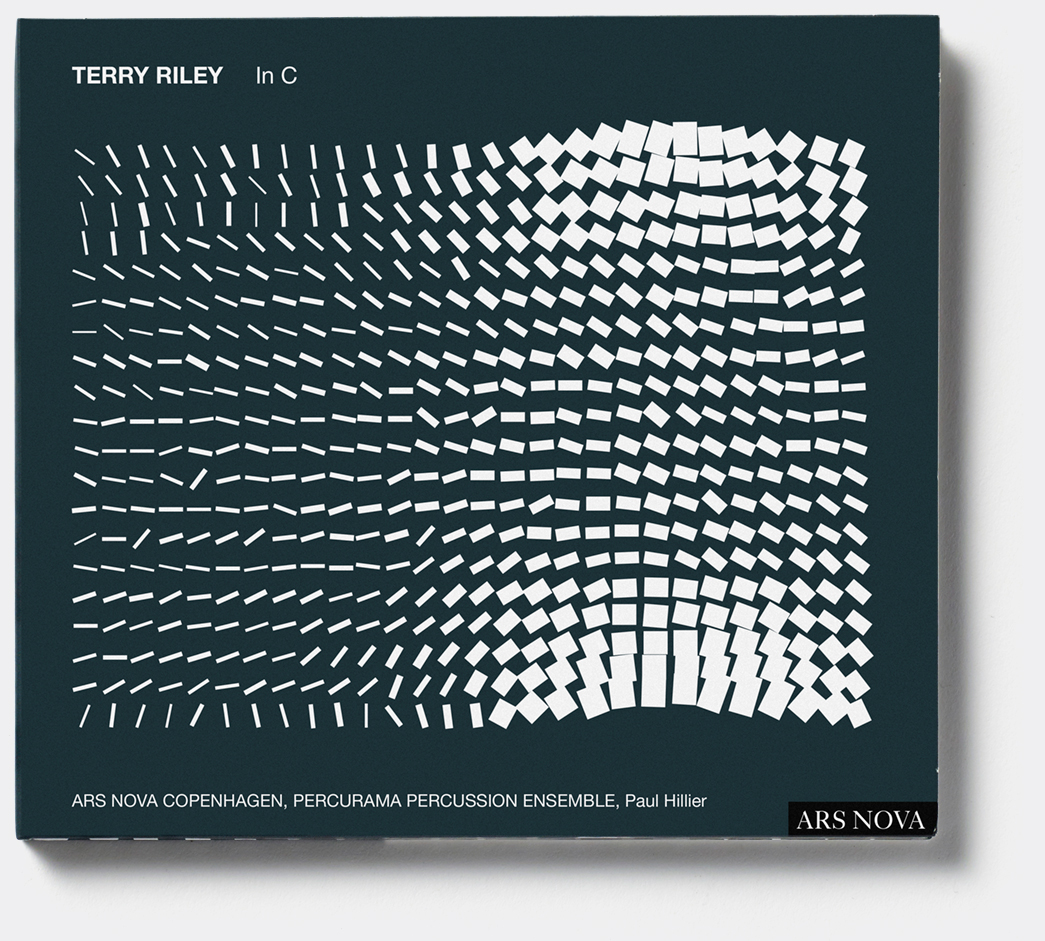Open music player
Terry Riley
In C
Ars Nova Records, 2006
Minimal mutations
This is an early cover, from 2006. American composer Terry Riley’s piece In C (1964) is one of the best-known examples of musical minimalism. Ars Nova’s ‘Copenhagen version’ was a new take on the piece, using both voices and percussion which gave me an extra challenge – interpreting an iconic work reinterpreted.
In C consists of around 50 short musical phrases of varying lengths. Each musician has control over which phrase they play or sing, and each phrase may be repeated a number of times. Conductor Paul Hillier describes the effect in his liner notes: ‘Throughout the work one has the sense of something unfolding organically. Most of the motifs are developments of what has just been heard, even as they begin to mutate in a new direction, while others make a more immediate contrast, usually of a rhythmic nature.’
Paul gave me visual references like Sol LeWitt and Bridget Riley – minimalist artists working in the same period as Terry Riley. I love their work but, as tempting as it is, you can’t just take a painting, especially a modern one, and put it on the cover of a CD. You have to pay for rights and they tend to be expensive – at least way beyond the budget of a small, independent recording label. I had to find or make a graphic that had the same geometric qualities as a Riley painting or systematic qualities of a Sol LeWitt drawing.
At the time, I was working on a graphic idea based on wind flow readings. It seemed to me that my own illustration could be an appropriately minimalistic motif. I redrew lines from the graphs and then experimented with changing the line widths in the pattern so that they showed fluctuations in both volume and direction. The repetition and gradual change of pattern with random elements echo, to some extent, the structure of In C.
